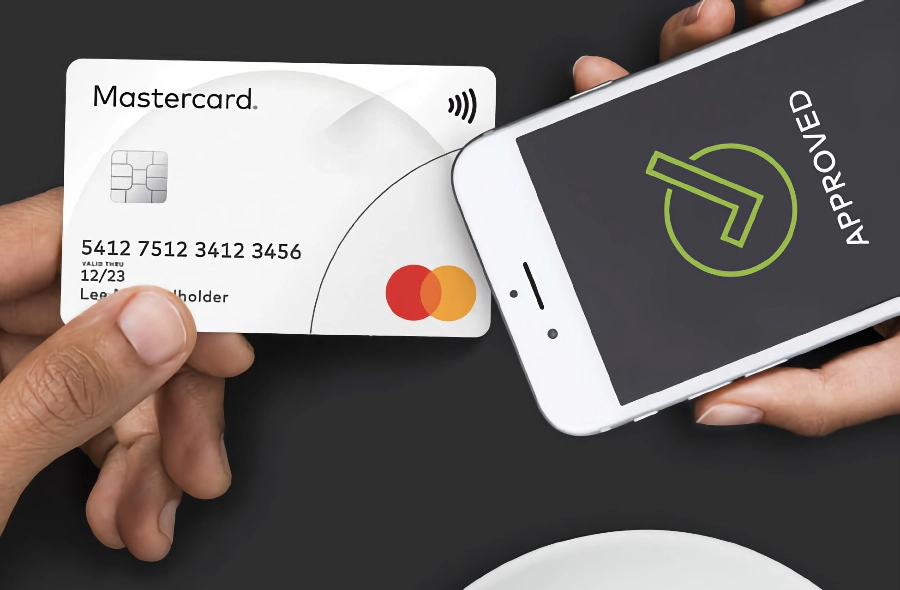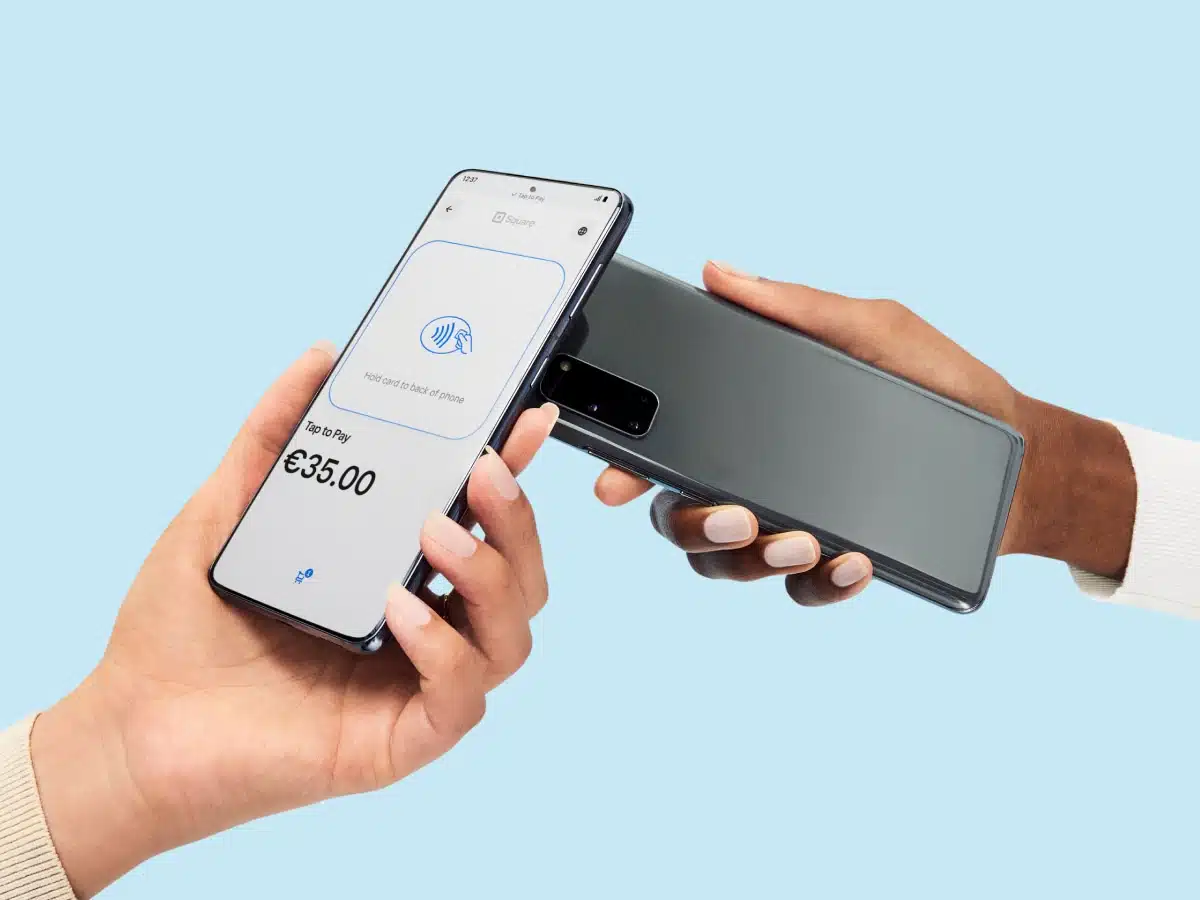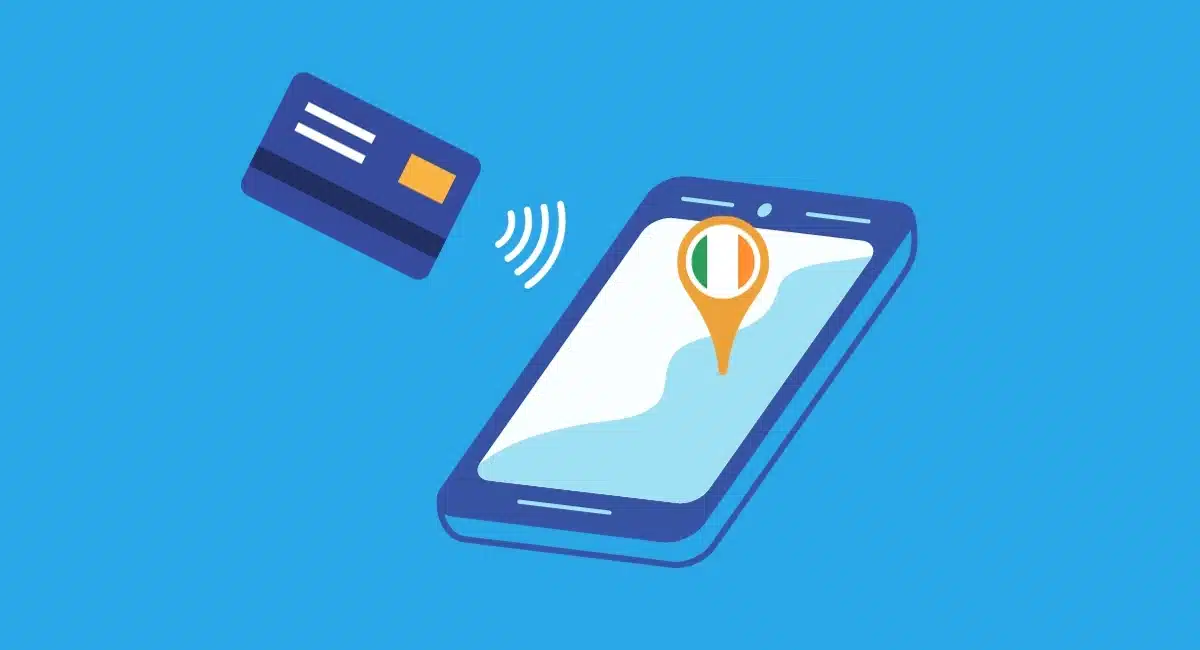Recent years have seen the rise of Tap to Pay on iPhone or Android – the ability to accept contactless payments on just your smartphone. No separate card reader is needed, just your mobile device and a payment app that has this function.
In this article, we’ll take a look at how Tap to Pay works as a technology and how merchants in Ireland can start using it.
Definition of Tap to Pay
Tap to Pay – or softPOS (Software Point of Sale) in tech speak – is a software solution that turns an NFC-enabled mobile device into a contactless payment terminal without an external card reader.
In practical terms, it is a payment app where you create a transaction and accept the tap of a card or digital wallet on the back of the phone to finalise the payment.
SoftPOS only works on smartphones, tablets and other mobile touchscreen devices that have Near-Field Communication (NFC) built in.
Mastercard calls the technology Tap On Phone whereas Visa calls it Tap To Phone. It is still a new technology yet to go mainstream in Ireland, but the term Tap to Pay has dominated the market since Apple’s decision to call their version ‘Tap to Pay on iPhone’.
How tap-on-phone works
To accept contactless payments without a card machine, you need a mobile device with near-field communication (NFC). Practically all newer smartphones have this.
Essentially, the smartphone – like card readers – transmits card transaction data to the payment processor exchanging the information between banks, card issuers and other mediators. When authorised by all parties, the transaction is confirmed as successful on the smartphone screen.
Image: Mastercard

But first of all, you have to subscribe to a merchant service offering Tap to Pay on iPhone or Android (depending on your device’s operating system).
The service will tell you to download a specific app on your phone and log in with your merchant credentials while connected to the internet. This is enough for a smartphone (or compatible tablet) to receive contactless payments.
To accept a Tap to Pay payment, you enter the transaction amount in the app and touch the confirmation button. The customer can then hold their mobile phone or contactless card close to your smartphone, which will read and process the payment via the internet.
The merchant service provider transfers the funds to your business account, typically within 1-3 business days, just like any card reader service.
| Solution | Android | iOS | Costs |
|---|---|---|---|
| Square | Yes | 1.75% + VAT /transaction, no monthly fee or contract |
|
| SumUp | Yes | 1.69% /transaction, no monthly fee or contract |
|
| myPOS | Yes | 1.69%-2.19% + €0.05 /transaction, €0-4.99 monthly fee, no contract |
|
| Stripe | SDK* only | 1.4%-2.9% + €0.10 /transaction, no monthly fee or contract |
* Software development kit (SDK) for integrating softPOS in your own payment app.
So far in 2024, Square, SumUp and myPOS are the only payment service providers offering the feature out-of-the-box with its Tap to Pay on Android (not yet iPhone).
Square lets you enable the feature in its Point of Sale app, which also connects with Square Reader. In addition, the app allows you to send payment links and accept QR code payments. Transactions via Square Tap to Pay are fixed at 1.75% + VAT with no monthly fees or commitment required.
SumUp charges an even simpler rate for its Tap to Pay on Android: 1.69% for any card. Like Square, SumUp’s app has several online payment options that make it easy to accept payments in most contexts.
myPOS, in contrast, charges a few different fees for its myPOS Glass app, where Android users can accept tap-to-phone. A higher rate, 2.19% + €0.05, applies for EEA card transactions with a monthly subscription. If you pay €4.99 + VAT per month, this fee is lowered to 1.69% + €0.05 per contactless EEA card transaction.
Image: Square

Stripe Terminal offers its own Tap to Pay on Android option in Ireland, but this is only for companies with the resources to implement codes in a custom app. In other words, it’s not a solution that very small businesses are able to use out-of-the-box.
Apple doesn’t yet offer Tap to Pay on iPhone in Ireland, but we expect it to be rolled out in 2024 to select payment companies. We also expect more Android options launching, based on the rapid tap-to-phone rollouts in other countries like the UK and Australia.
Advantages
Disadvantages
A couple of the disadvantages relate to customers having to touch and hold the phone.
Sometimes, a softPOS app might ask for a PIN code, mainly when the transaction amount exceeds the contactless limit. The merchant is then forced to give the customer the smartphone so they can enter the code on the touchscreen.
This is not the most hygienic solution, and customers may also be reluctant to enter their card PIN on a stranger’s phone if they’re concerned about security.
Some merchants may think about purchasing a phone to dedicate exclusively for this purpose, but then why not buy a card reader that’s cheaper and less likely to be stolen?
In addition, tap-to-phone only processes contactless payments, not chip cards that have to be inserted. If a chip card doesn’t have a contactless function enabled, your Tap to Pay app will be of no use.
So when can it be a good solution?
Tap to Pay could be considered a secondary card reader for emergency situations (e.g. during technical issues with a card terminal or WiFi) or to accept payments from customers who can’t pay in cash (if you try to be cash-only).
Card reading capabilities in a smartphone is also useful for home deliveries and shops, bars and restaurants with large serving areas. The portability of mobile phones is, in fact, the main advantage of Tap to Pay.

